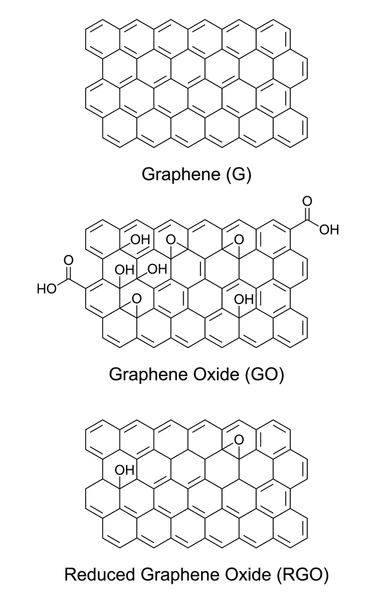
Synthesis Methodologies and Industrial Scalability
Advanced Oxidation Techniques
Recent innovations in the Hummers method for graphene oxide synthesis, such as the substitution of NaNO₃ with a H₂SO₄/H₃PO₄ mixture (9:1 ratio), have significantly increased oxidation efficiency by 30-40% and reduced toxic gas emissions. Optimizing KMnO₄ concentration accelerates reaction kinetics, achieving high C/O ratios of 2.1-2.3 in just 2 hours. Plasma electrolysis, used at atmospheric pressure, enables the synthesis of graphene oxide at 60-80°C with defect densities lower than 0.5×10¹² cm⁻².
Purification and Exfoliation Breakthroughs
Electrodialysis has been shown to reduce aqueous ion contaminants to below 10 ppm, achieving purity levels of 99.8%. Ultrasound-assisted exfoliation generates monolayers with a thickness of 0.7-1.2 nm and an 85% yield. A combination of thermal shock and chemical exfoliation results in graphene oxide stacks with lateral dimensions exceeding 50 μm.

Structural Engineering for Performance Enhancement
Defect Modulation and Functional Group Control
Remote plasma oxidation allows precise bandgap tuning from 2.1 eV to 4.3 eV based on exposure time. Carboxyl group density is optimized through pH-controlled synthesis, improving proton conductivity to 0.12 S/cm at 25 °C.
Hybrid Composite Fabrication
Integrating Fe₂O₃ into graphene-based material has achieved magnetization values of 5.5 emu/g with 15% loading, while maintaining sheet resistance under 1 kΩ/sq. Ball-milled carbon oxide demonstrates a large BET surface area of 296 m²/g, with improved drug loading efficiency for biomedical applications.
Cross-Domain Application Paradigms
Energy Storage Systems
Graphene-based material used in supercapacitors demonstrates a specific capacitance of 312 F/g with 95% retention after 10,000 cycles. In lithium-ion battery anodes, carbon oxide achieves a capacity of 1,250 mAh/g via pore engineering, enhancing performance and lifespan.
Water Treatment Technologies
Graphene-based membranes show exceptional performance, with a Pb²⁺ rejection rate of 99.6% and high flux rates. Layer-by-layer assemblies using carbon oxide outperform commercial NF-270 membranes in selectivity and flux.
Advanced Manufacturing
Graphene oxide composites achieve 120 S/cm conductivity with 15 wt% loading, replacing carbon black in lithium-ion battery cathodes. 3D-printed graphene-based scaffolds demonstrate high compressive strength, making them suitable for bone tissue engineering.

Emerging Innovations and Commercialization Challenges
Scalable Production Technologies
Continuous flow reactors have enabled the production of graphene oxide at 50 kg/day with minimal batch variability. Microwave-assisted reduction cuts processing time from 24 hours to just 15 minutes, while achieving high conductivity recovery.
Environmental and Safety Considerations
Green synthesis routes have been developed to reduce the consumption of H₂SO₄ by 60%, with ultrasound intensification providing an eco-friendly alternative. Alanine-based reduction methods allow for deoxygenation without the use of hydrazine, yielding high-conductivity reduced graphene oxide.
Future Research Trajectories
- Machine learning-guided synthesis optimization for defect engineering
- Covalent organic framework (COF)-graphene oxide hybrids for catalytic applications
- Plasma-functionalized graphene oxide membranes with switchable ion selectivity
Conclusion
The graphene oxide landscape is rapidly evolving, shifting from basic material synthesis to advanced structure-property engineering. For broad industrial adoption, key challenges include standardizing quality metrics across production scales, conducting lifecycle analysis of green synthesis methods, and developing functionalization protocols tailored to various applications. Advanced characterization techniques, combined with AI-driven optimization, will shape the future of graphene oxide technologies.
To get detailed scientific explanations of graphene oxide, try Patsnap Eureka.

